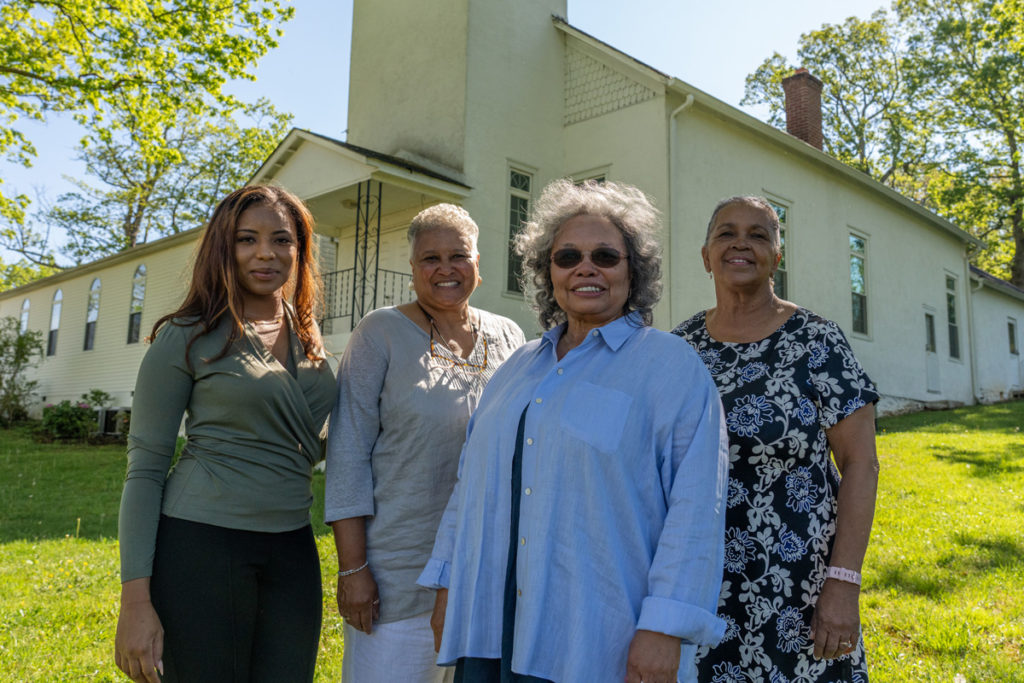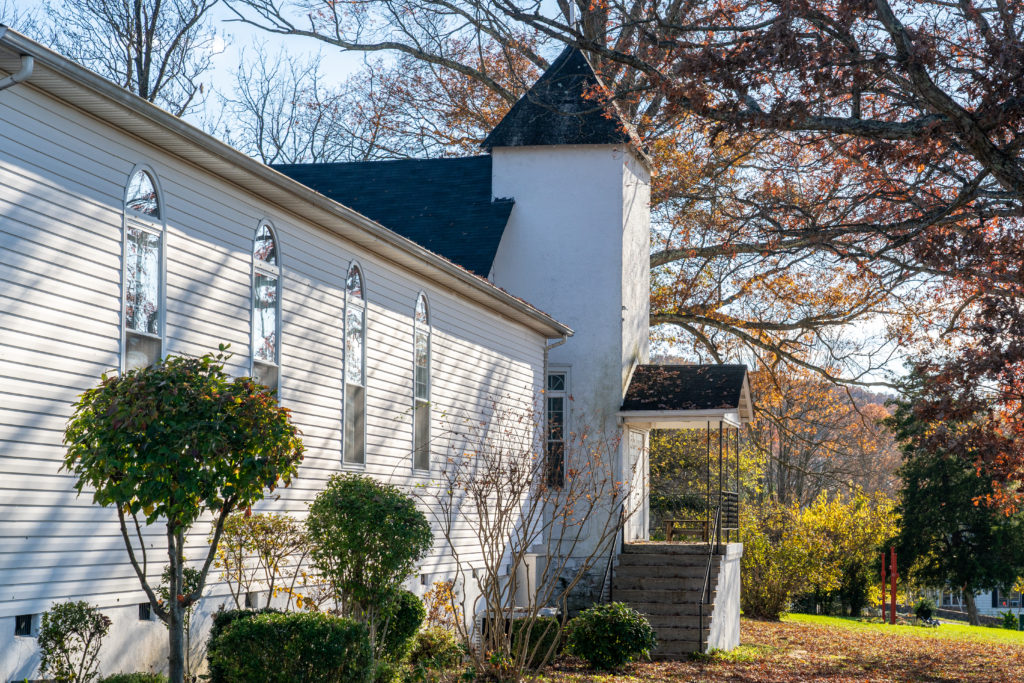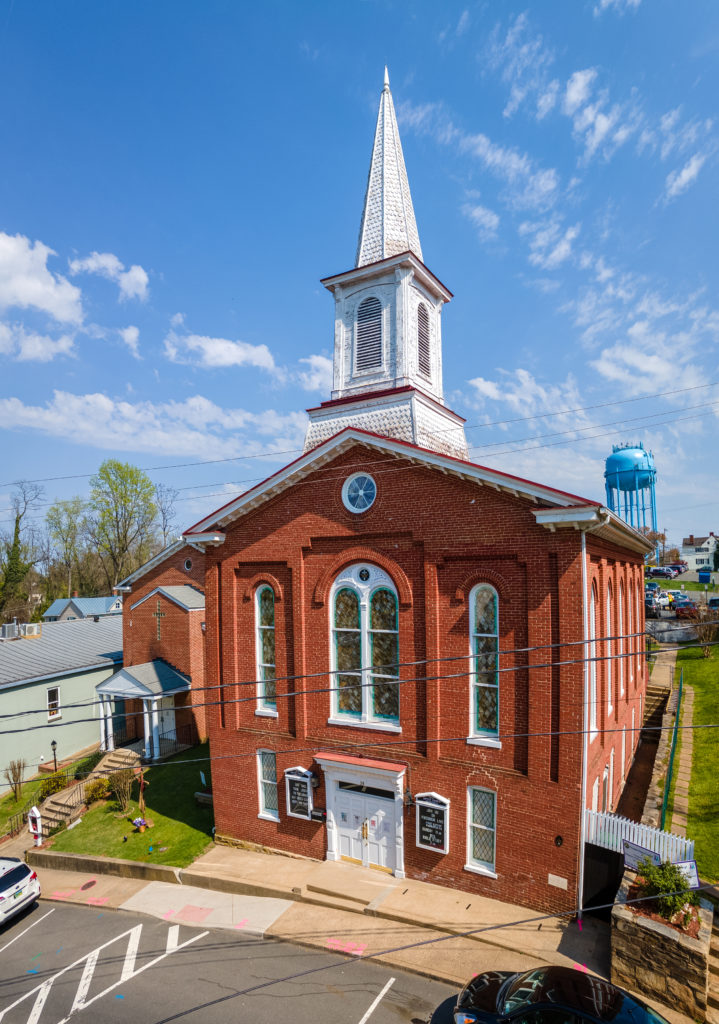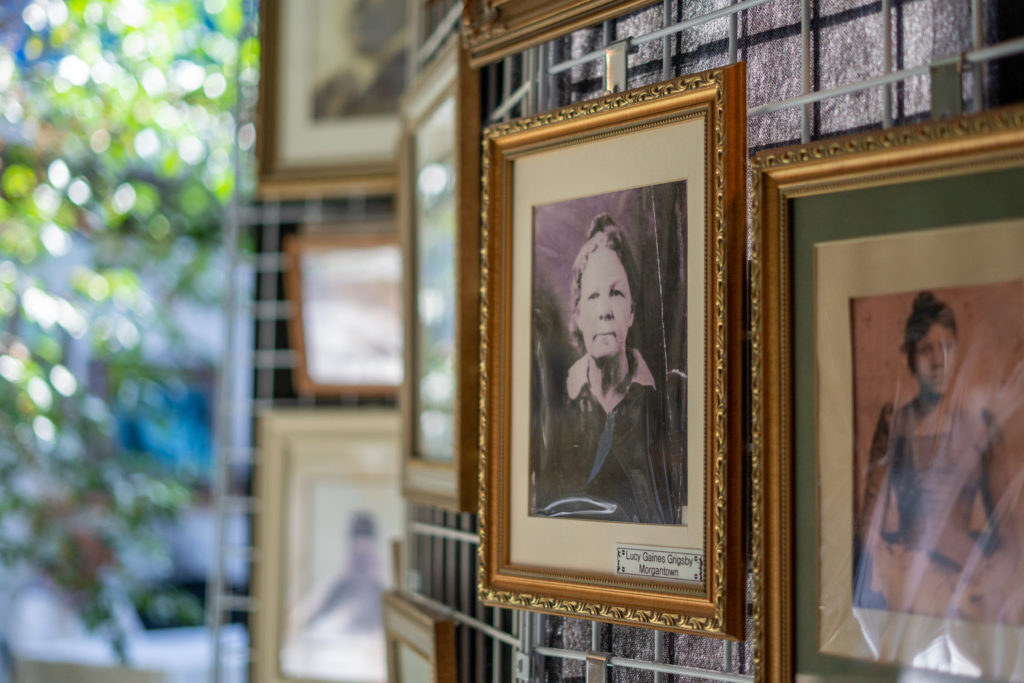In 1860, free and enslaved African Americans made up half of Fauquier County’s entire population. Black communities like Morgantown, two miles south of Marshall and where Afro-American Historical Association of Fauquier County President Karen Hughes White and Board Member Angela Davidson were raised, grew out of emancipation. They held powerful meaning as community centers where African Americans could freely do what they could not when they were enslaved: worship, conduct commerce, obtain education, own land. Brister Grigsby, great-great-grandfather to Davidson and Hughes White, became one of Morgantown’s early residents in 1872, when he bought land from the estate of William J. Morgan, where he, his wife Nancy Glascock Grigsby and their three sons were once enslaved. Over the years, their farm and family grew, and Davidson represents one of four generations of Grigsby descendants still living there today.

Pivotal historical periods that followed emancipation both drove and led many African Americans from these once-thriving communities, taking along with them much of the “oral history” records of the time and place. Descendants of these residents now make up less than 10 percent of Fauquier’s population today, and as rapid development has laid new upon old, only remnants of their many communities are still visible.
The one-room Morgantown Elementary School stands in disrepair right where it served Black children from 1891 until winter break of 1963, when the also-segregated Northwestern Elementary School opened in Rectortown. The former Morgantown Colored Baptist Church still serves its congregation along Free State Road as Mt. Nebo Baptist Church. These are two of just a few dwellings left in a community once flourishing with Black-owned stores, family farms, midwives, a furniture maker, a blacksmith, a plasterer. But the contributions of these Black communities remain.
The Afro-American Historical Association of Fauquier County (AAHA) and The Piedmont Environmental Council (PEC) have teamed up to take important African American contributions like those in Morgantown to the web, documenting the African American presence in Fauquier County in the form of a story map. A story map is an interactive scrolling website that integrates maps, photos, video, text, and other features to tell a complete narrative story or timeline.
With information AAHA gleaned from oral histories, deed research, church records and anniversary books, school board minutes, insurance and appraisal records, slave census records, county rolls, voting records, Freedmen’s Bureau papers, and so much more, the story map gives an overview of the important role churches, schools, and communities played in African American society. Within the story map, PEC built a geographic map of Fauquier County with icons representing locations that visitors can click on to see a photo and read a short description. A “read more” cue leads to an interactive webpage with additional history and photographs.
>> View the story map here: https://storymaps.arcgis.com/stories/c1ea9dfa76c6493d853d0543feed09db
>> Read more about this project here: https://www.pecva.org/work/landscapes/story-map-project-fauquiers-historic-african-american-communities/
“It gives people a really good visual of where everything was, what it looked like 100 years ago, what they look like today, and also a good historical record of the sites and communities,” said Hughes White’s granddaughter, Aysha Davis, who has provided the technical savvy to populate the story map with AAHA’s collected history, stories and imagery. PEC lent its experience and expertise with story mapping, photography, and grant writing to the project, while the Fauquier County GIS Department provided geolocation assistance for many points on the map, and The PATH Foundation provided a grant that helped make the project possible.
“I am lucky to come from a family of force that knows our history ever since I can remember. But a lot of people don’t have that. So this project is meaningful to me in the sense that I’m making the information forever accessible. This is especially important for my generation, because we’re so used to hopping onto Google and getting information in five seconds. We need to make sure all of this is easy to get to,” Davis said.
The story map is intended to be a resource for scholars studying the formation of counties, town and county planners making decisions for their localities, educators in the classroom, and young children through seniors all. “Having gone through the school system myself, I think it’s important that children are able to connect to persons, places and things, and to have information that reminds them of who they are and gives them a sense of self-worth and humanity,” said Hughes White, who added that even within her own generation, elders often sheltered descendants from the full details of family history.

Davidson hopes it will also help preserve what remains of communities in Morgantown’s historic district, which, with just four remaining original structures, is described in its National Register of Historic Places application as having one of the best preserved collections of African-American, Reconstruction-era buildings in the county.
“Increasing development and rising property values are impacting our communities. I think all of us, my age and younger, are wondering how long these communities will remain intact. I’m afraid if we don’t get this history documented, it will be lost. And I think if new owners buying these properties know the history of what’s taken place there, they will take pride in these historic communities in which they’re living.”
While researching church histories for the story map, AAHA Community Outreach Coordinator Christine Lewis, who grew up in the Haiti community of Warrenton, said she hopes the story map will help remind people of today that there were very vibrant communities here before them—as it’s unexpectedly done for her.

“We had a real sense of community in Haiti, and other African American communities nearby—Alexandria Heights, The Pike, Warrenton—were also my stomping grounds. I could go down to the middle of Haiti, do something I had no business doing, and a neighbor would come out and shake her finger at me. I didn’t realize they had those same kinds of communities in the rural areas, like Ashville and Rosstown. It was the churches in these communities that really brought the people together.”
Davidson said the story map has given her “a whole new sense of pride in families that came through Reconstruction to today. Throughout much of the history, everything was segregated, and you get the impression that the African American community was hurt by it, but yet, we didn’t let that hold us back. Segregation forced us to use our own ingenuity about what our communities needed. There was a certain amount of self-sufficiency, as well as efficiency, in these communities.”
Looking forward, AAHA is already thinking about ways to add new African American contributions to the story map, including cemeteries and burial sites, buildings, businesses, baptism sites, and landmarks pertaining to the underground railroad. And they hope other community members will recommend additions as they realize they have photographs or other artifacts that can be shared through the story map.
“The outpouring of support from the community, from the descendants of former slaveholders and from white churches sharing records that documented the enslaved who attended church with their slaveholders—that has touched me. It’s connecting our histories and realizing that all of this is our history, not just one versus the other,” Hughes White said. “Because we’re stronger together than we are apart. And Fauquier becomes the winner, because Fauquier will have a more complete and integrated history, because Fauquier’s history is strong, and is bold, across all ethnic groups.”


